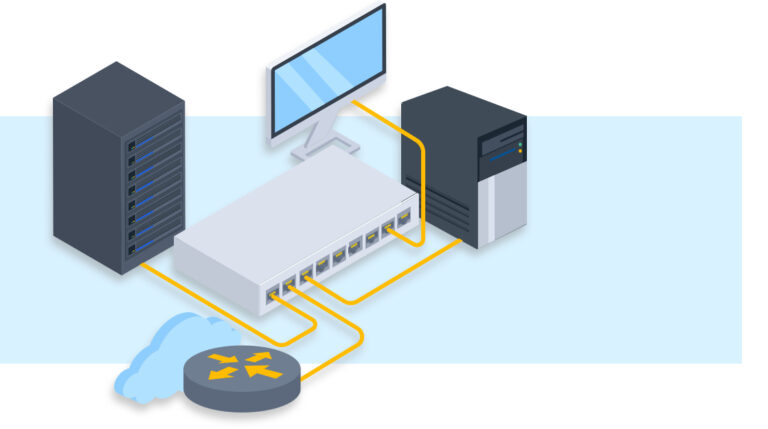Efficient Payroll Management: Tips and Best Practices
Table of Contents
- Introduction to Payroll Efficiency
- Understanding the Payroll Process
- Key Challenges Faced by Businesses
- Best Practices for Streamlining Payroll
- Leveraging Technology for Payroll Solutions
- The Role of Compliance in Payroll
- Real-Life Examples of Efficient Payroll Systems
- Resources for Further Learning
Introduction to Payroll Efficiency
In today’s fast-paced business landscape, efficient payroll management ensures smooth operations and high employee satisfaction. A robust payroll system can adeptly navigate the intricate aspects of wage calculation and timely distribution, making it indispensable for building trust within the workforce. Beyond its administrative role, effective payroll management is a strategic asset, contributing to a positive organizational culture by bolstering morale and driving productivity.
The importance of payroll efficiency transcends logistical concerns, positioning itself as a competitive advantage. Businesses in Canada often become entangled in outdated procedures that spawn errors and inefficiencies, diverting valuable resources from strategic imperatives. By prioritizing Canadian payroll system efficiency, organizations can circumvent these challenges and reallocate focus toward growth-driving activities, enhancing their competitive edge and securing a foundation for sustained success.
Understanding the Payroll Process
The payroll process is a comprehensive operation that extends far beyond a monthly routine of distributing paychecks. It involves carefully tracking employee work hours, precise wage calculations, timely tax deductions, and strict adherence to a dynamic regulatory environment. Each element of this process needs to be flawlessly executed to prevent financial discrepancies and nurture positive employee relationships. A single payroll miscalculation can escalate into significant legal challenges and impact workforce morale, underscoring the need for meticulous attention to accuracy and consistency.
Effective payroll management is built upon pillars of thorough and transparent record-keeping. This discipline facilitates seamless audits and compliance checks and establishes a resilient system that guards against operational risks. By implementing these foundational practices, companies can strategically redirect resources from cumbersome administrative tasks to initiatives that drive innovation and growth. Such a shift improves operational efficiency and solidifies the organization’s competitive positioning in an increasingly challenging market landscape.
Key Challenges Faced by Businesses
Businesses regularly encounter challenges in managing payroll, including accuracy, regulatory adaptation, and ensuring punctual payment processing. Even seemingly minor errors in payroll calculations can snowball into significant issues, such as eroding employee trust and incurring financial penalties due to non-compliance. Addressing these challenges necessitates a combination of foresight, adaptability, and strategic planning. Consider the case of a rapidly expanding business that implemented digital payroll solutions as a strategic measure to overcome the limitations set by manual processes. This switch not only streamlined payroll operations but also substantially reduced processing errors, achieving an improvement rate of over 30%. Examples like this underscore the importance of innovation and adaptability in maintaining operational efficiency and relevance in a dynamic business environment.
Best Practices for Streamlining Payroll
Implementing best practices within payroll management is crucial for establishing an environment characterized by precision, compliance, and efficiency. These practices mitigate potential risks and significantly enhance the productivity and reliability of payroll processes, ultimately benefiting the organization as a whole.
- Leverage automation tools to minimize human errors while optimizing processing time, which allows HR personnel to focus on more strategic responsibilities.
- Regularly conduct audits to ensure adherence and accuracy, fostering an atmosphere of trust and accountability in payroll procedures.
- Participate in continuous learning opportunities to remain updated on industry developments, technological innovations, and regulatory shifts, ensuring a proactive outlook.
Reading about the importance of streamlining payroll processes can be invaluable for those interested in exploring these strategies further.
Leveraging Technology for Payroll Solutions
Integrating technology into payroll management processes has redefined traditional methods, transforming tasks that were once tedious and error-prone into streamlined and efficient operations. The introduction of cloud-based solutions and mobile applications offers businesses unprecedented levels of flexibility, accessibility, and data security, significantly reducing the incidence of errors while enhancing overall productivity. Highlighting insights from a recent report on payroll technology trends, advancements in artificial intelligence (AI) and machine learning (ML) are poised to revolutionize payroll systems further. These innovations enable personalized insights and facilitate real-time, data-driven decision-making processes, empowering organizations to maintain a competitive edge by reducing the risks associated with human error and administrative delays. By embracing these technological advancements, businesses can enhance strategic payroll management practices and create value across the organization.
The Role of Compliance in Payroll
Compliance is fundamental to effective payroll management, demanding meticulous attention and proactive oversight. Compliance with labor laws, tax codes, and governmental regulations is non-negotiable, as breaches can lead to severe legal repercussions, financial penalties, and tarnishing the organization’s reputation. Recent updates concerning compliance, such as enhanced data privacy regulations, have introduced additional complexity into payroll processes. Businesses must remain vigilant and proactively adapt their systems and practices to meet evolving mandates. This often involves conducting regular staff training sessions, updating technological systems, and fostering a culture of compliance to ensure that obligations are consistently met. By doing so, organizations can shield themselves from potential penalties and liability while enhancing stakeholder trust and credibility.
Real-Life Examples of Efficient Payroll Systems
Consider the success story of a multinational corporation that embraced a unified payroll system across its subsidiaries worldwide. This strategic action led to a notable 25% decrease in payroll processing durations and a significant boost in employee satisfaction due to improved transparency and reliability in payroll procedures. Such examples powerfully illustrate the tangible benefits that efficient payroll systems can deliver in terms of operational enhancement and employee morale.
Resources for Further Learning
The continuously evolving field of payroll management highlights the importance of ongoing education and adaptation. Numerous resources, including comprehensive books, interactive online courses, and expert-led seminars, are available to those seeking to deepen their expertise in efficient payroll practices.
Whether an HR professional or a business owner, expanding your knowledge of payroll systems can lead to informed decision-making and contribute significantly to business success. Staying current with technological advancements and regulatory updates is imperative to navigate future challenges and seize emerging opportunities in the complex and ever-changing business environment.
Keep an eye for more news & updates on DGMNewsCom!






